Yesterday I described the walk from Keoneloa Beach (commonly known as Shipwreck Beach) to the Makauwahi Cave Complex, and the Makauwahi Cave Trail that follows the edges of the cave complex. So now it’s time to get down on our knees and crawl in!
Once through you will be rewarded with the view above, so don’t be intimidated by the small opening. A fabric covered board has been laid down so you can easily crawl through the ten-foot long tunnel, then easily stand and walk for the rest of your visit.
Above: Looking back to the entrance from inside the cave.
Once through you soon find yourself in an area open to the sky.
Watch your step and avoid the green waterholes. They mark deep excavations.
Originally they considered calling this an amphitheater, which it is, but they were afraid that doing so would have encouraged rock concerts! And indeed a concert here would “rock!” The video above gives a good senses of the size of the sinkhole and caves.
The back of the South Cave has a maze of smaller passageways that are off limits. This area is home to the rare blind cave organisms that live there, including invertebrates, pale amphipods and isopods, and their predator, an eyeless cave spider, called the Kaua’i blind cave wolf spider.
This is the only place on earth where the Kaua’i blind wolf spiders are found, except for a few lava tubes between the caves and the town of Kōloa.
The formation of the cave began 400,000 years ago when sand dunes hardened (“lithified”) and then groundwater turned them into limestone, eventually eroding away the interior. Then, ten thousand years ago, the roof of the cave collapsed in the center.
Excavations began in 1992, and were promising, but significant explorations didn’t really begin until 1996.
Then the layers began to yield some fascinating stories. Once through the modern era, a window opened into the early Polynesian period, a 400 year old sediment layer that included bones of dogs, pigs, chickens, and the small Pacific rat that stowed away on the early settler’s boats.
Once below that level evidence of humans disappeared. The extinct Kuau’i owl, Grallistrix auceps, caused great excitement. The cave at the time was most likely home to many such owls, who left the bones of their prey to fall to the ground. More than 40 species of native birds, seeds and wood of nearby plants, hawks, waterfowl, wading birds, and sea bird bones all abounded. Two previously unknown and now extinct honeycreepers were discovered. Almost half of the species found are now extinct.
Above: Painting by Dr. Julian Pender Hume, paleontologist and artist, used as a guide at the caves. The owl, #5, is the extinct long-legged Grallistrix auceps.
Seven thousand years ago the cave was under the sea. At that time the earth was in a period of warming following the melting of the glaciers and the sea levels were about 2 meters higher than they are today. Many extinct snails were found as well.
A local volunteer gives visitors a good overview of the cave and its history.
On leaving the cave enjoy the trail to the beach nearby.
This is where the little stream that runs near the cave entrance joins the ocean.
Once you are done with the main attraction, walk around the grounds and enjoy the flora and fauna that are being brought back here.
This tortoise does his best to keep the grass trimmed. Watch him doing his thing in this short video:
The caves and surrounding area are a remarkable testament to the good stewardship of the people of Kaua’i as they do their best to restore the habitat and preserve the findings of this unique area.
For more information here are some links:
Home Page of Makauwahi Cave Complex - has excellent blog, links, articles, and directions for visiting. Be sure to check here before visiting in case it is closed because of conditions or excavations.
Conservation Council for Hawaii
Mahalo for reading~!


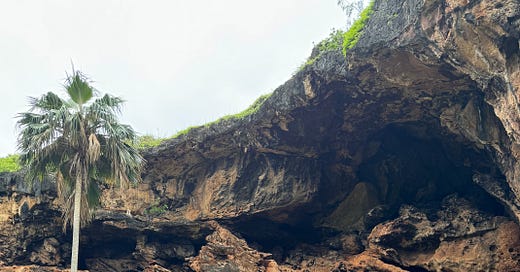



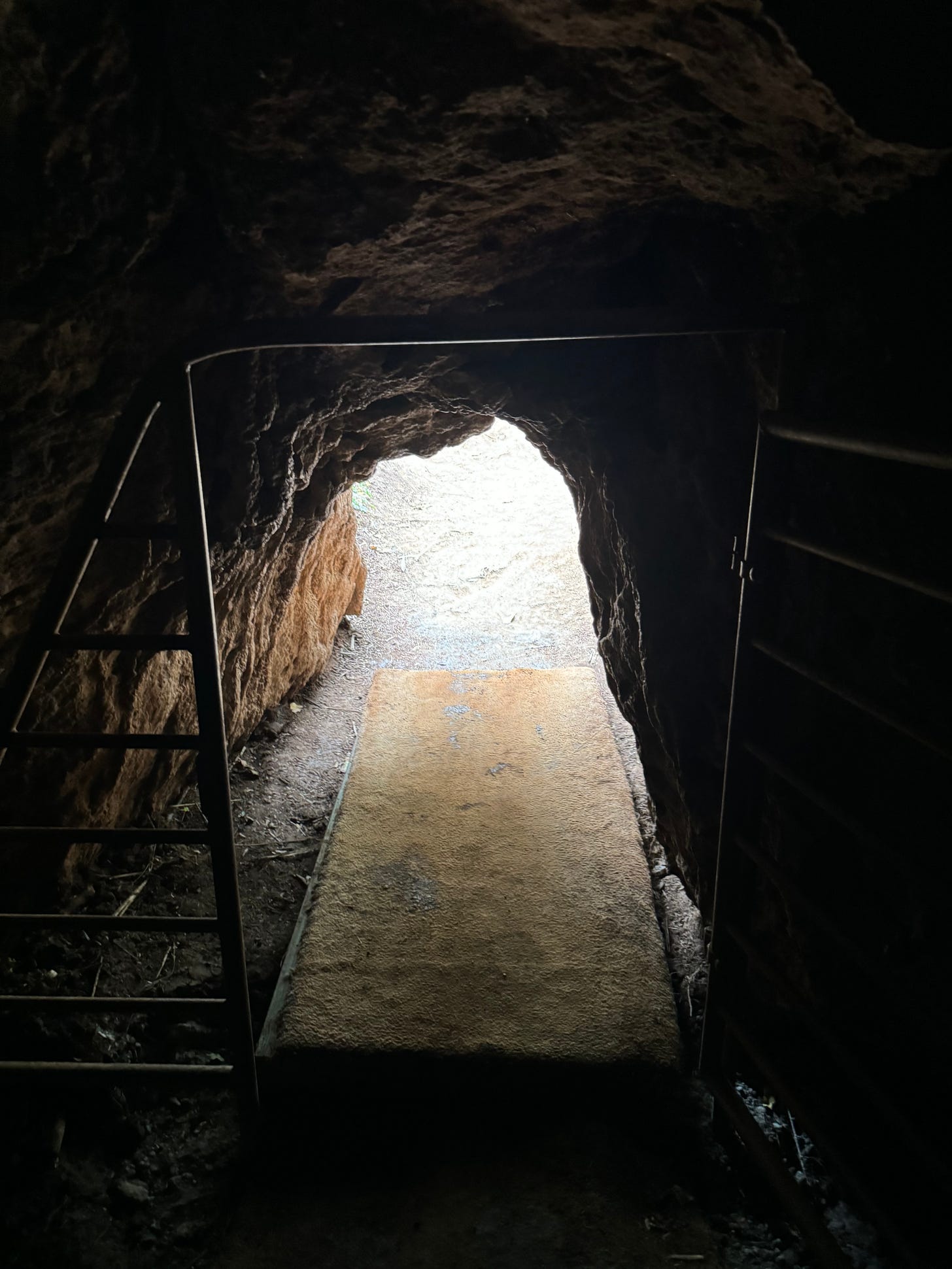
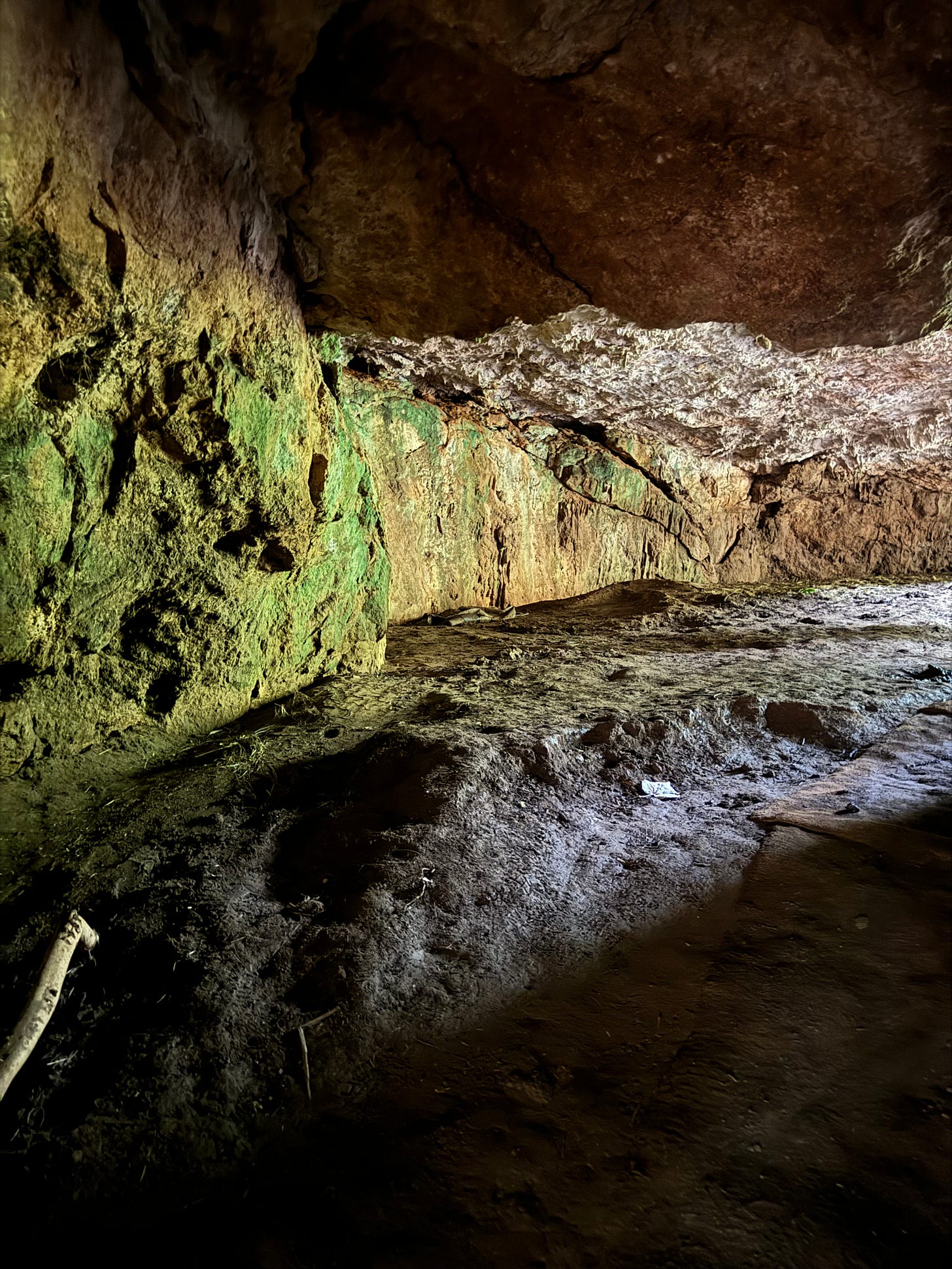
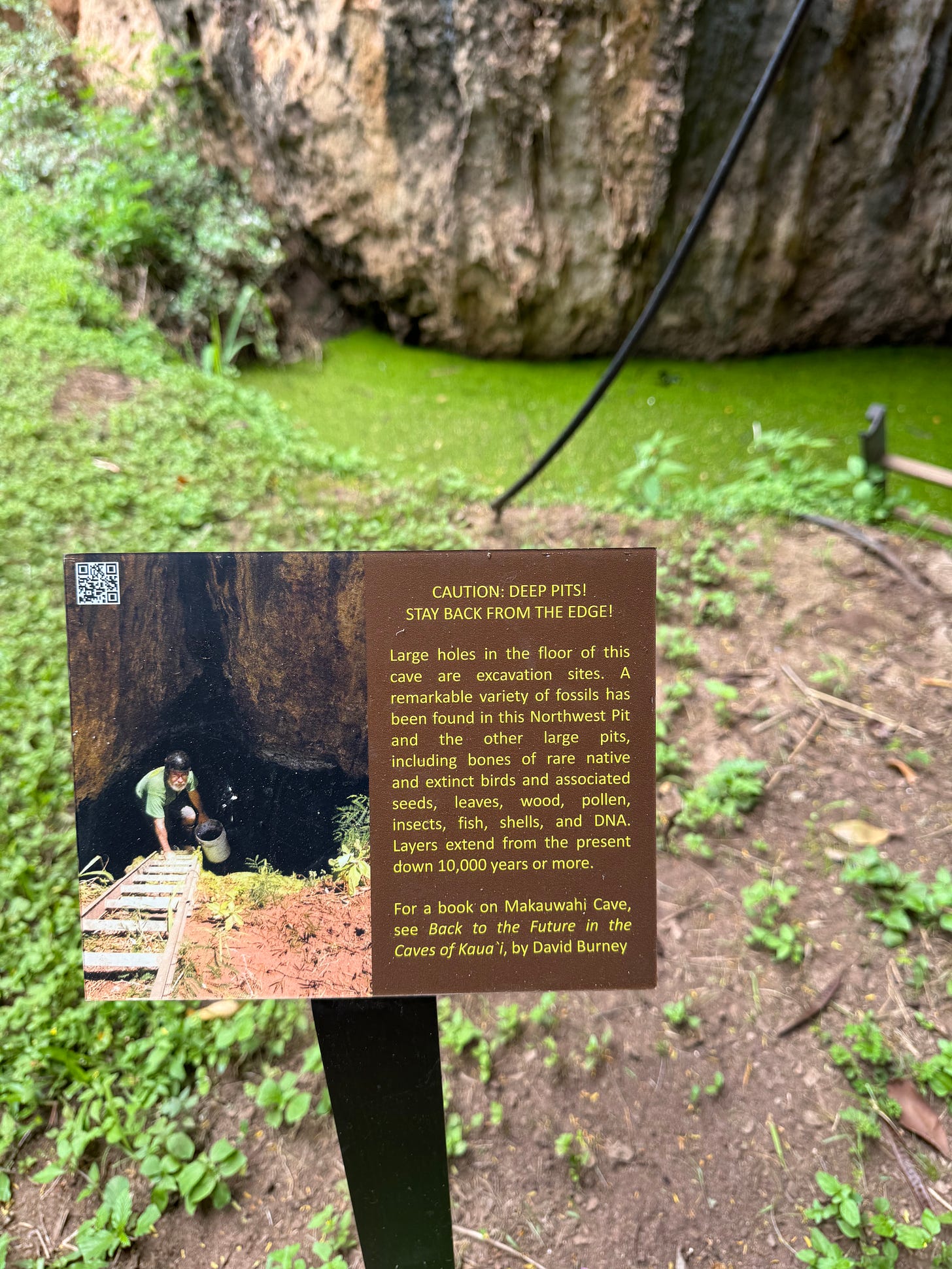
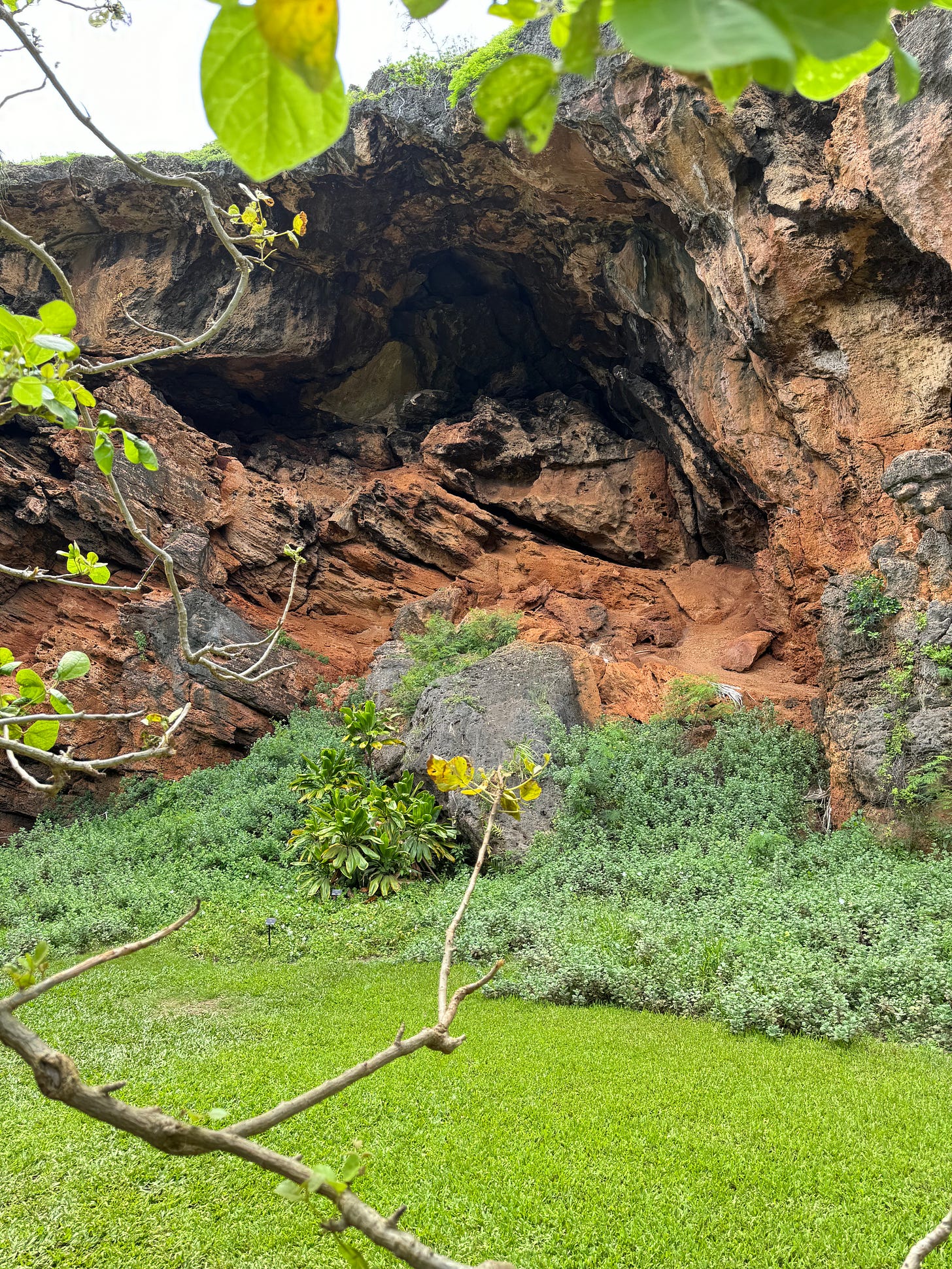
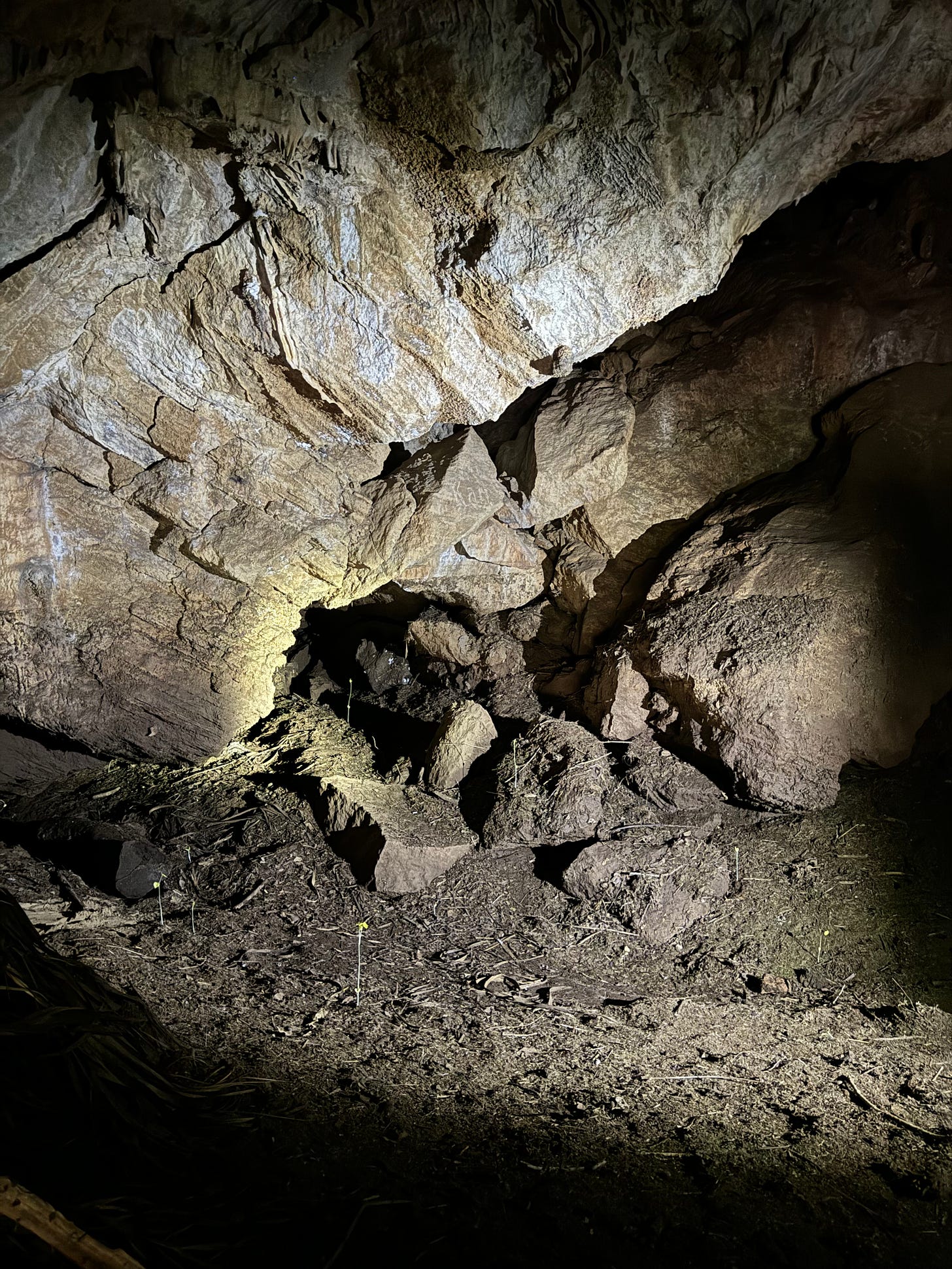
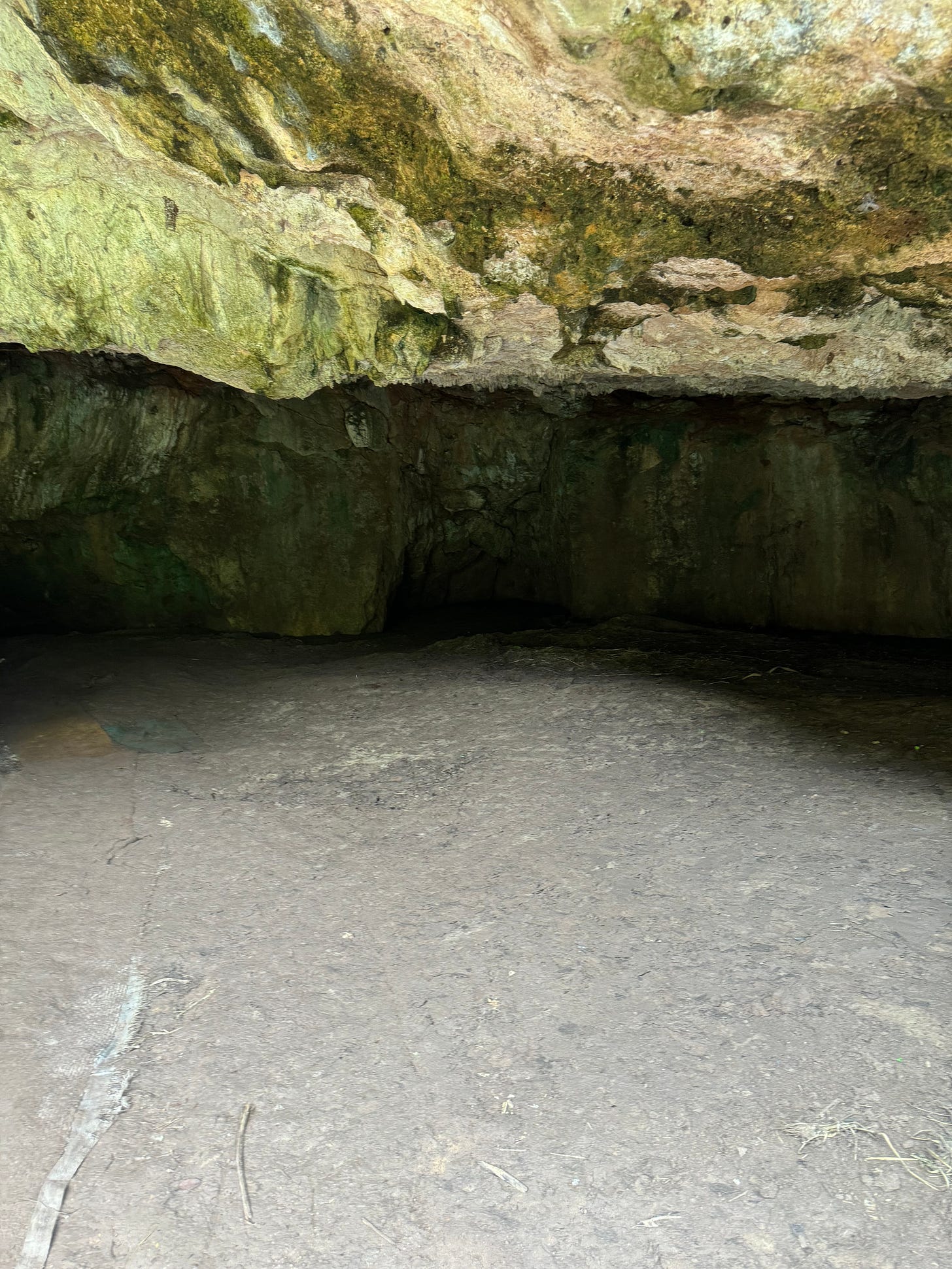
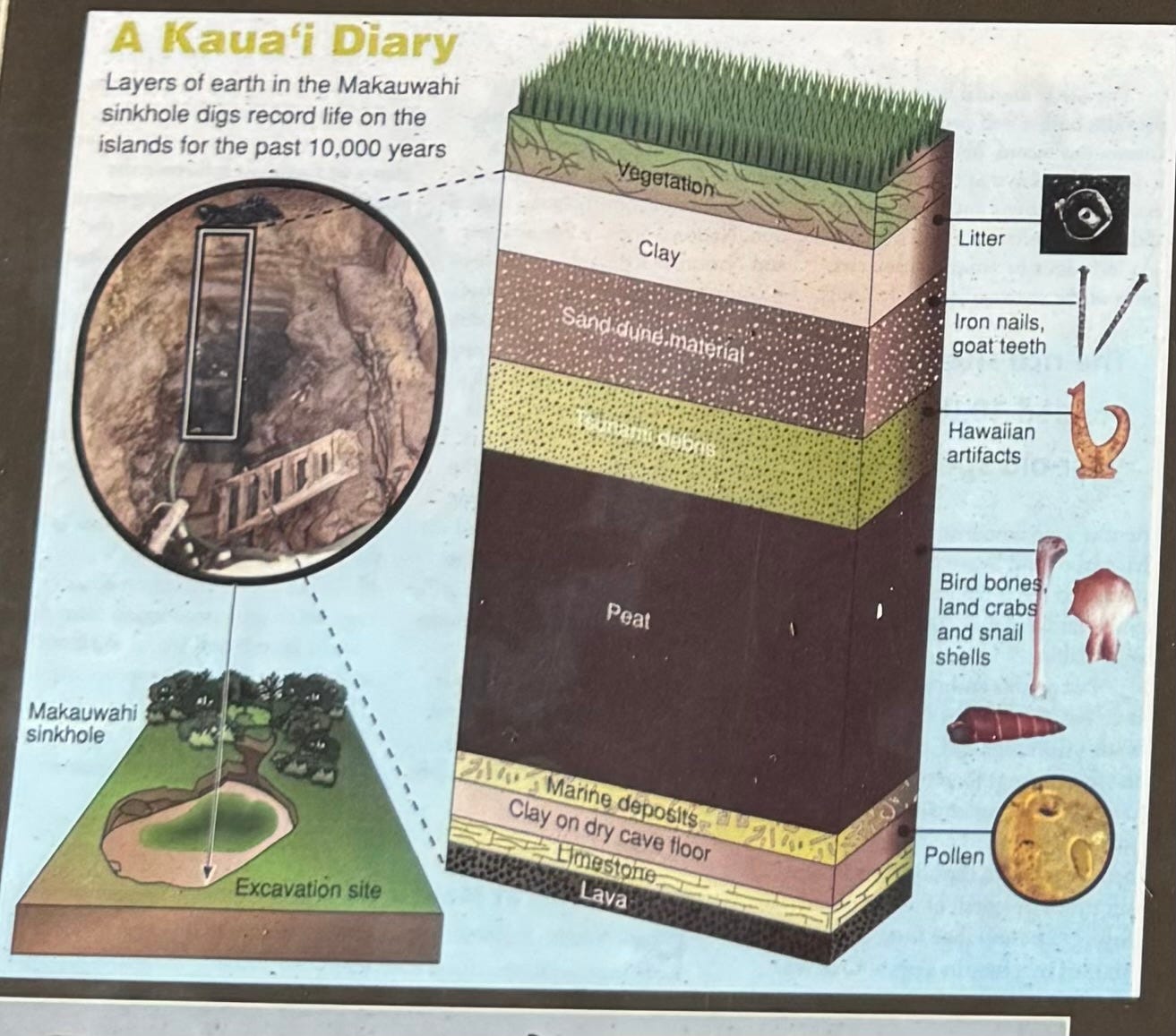
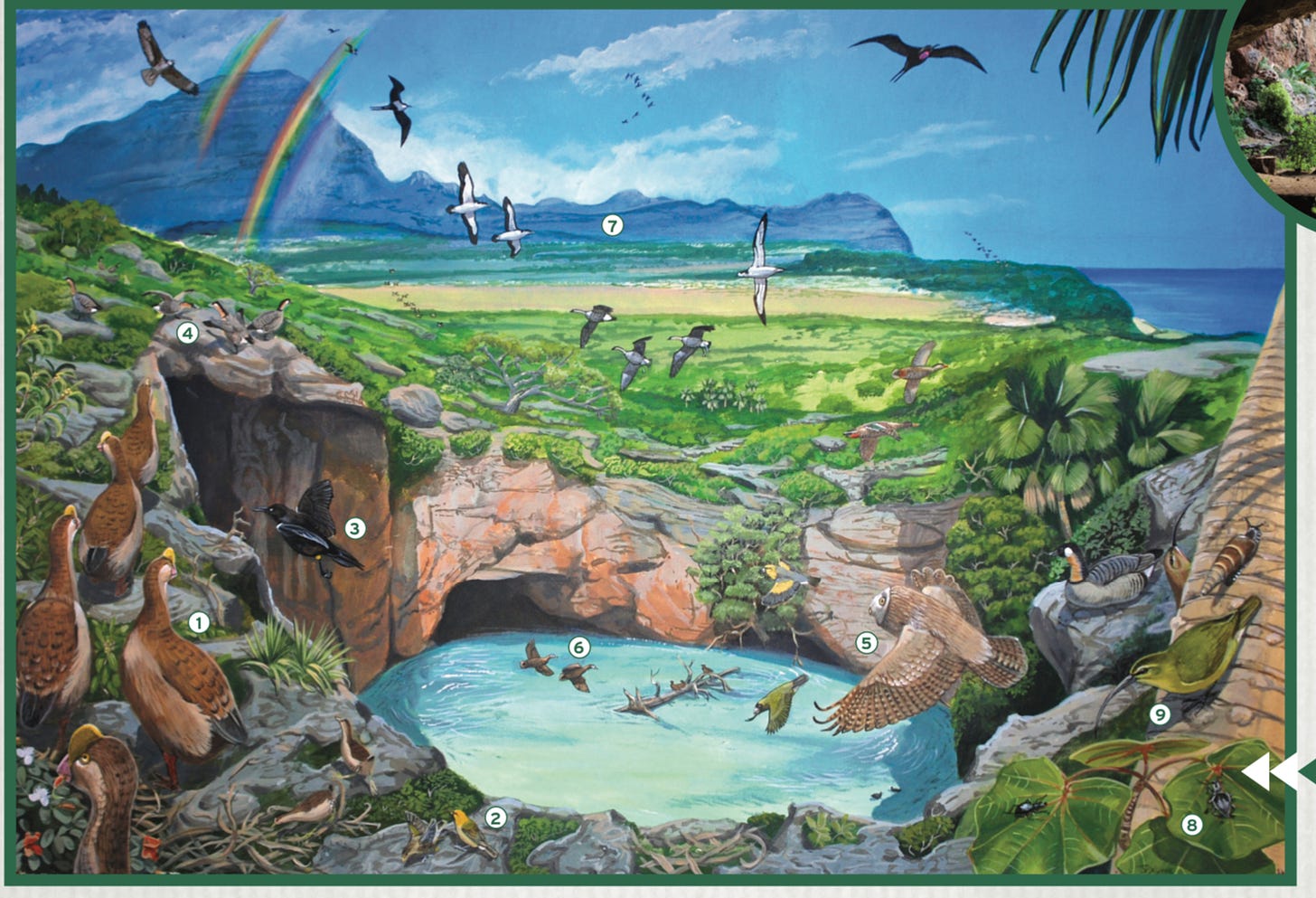
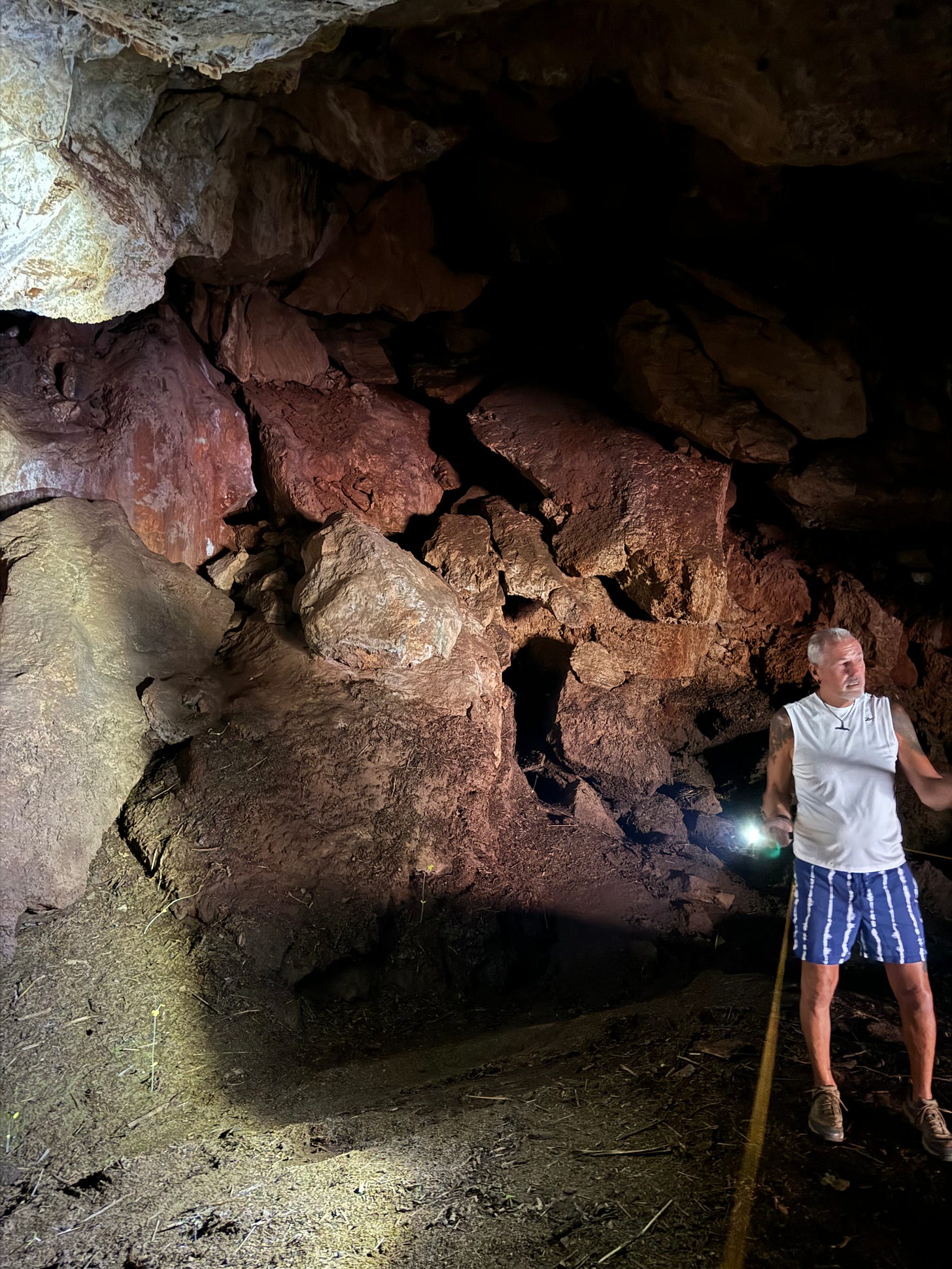
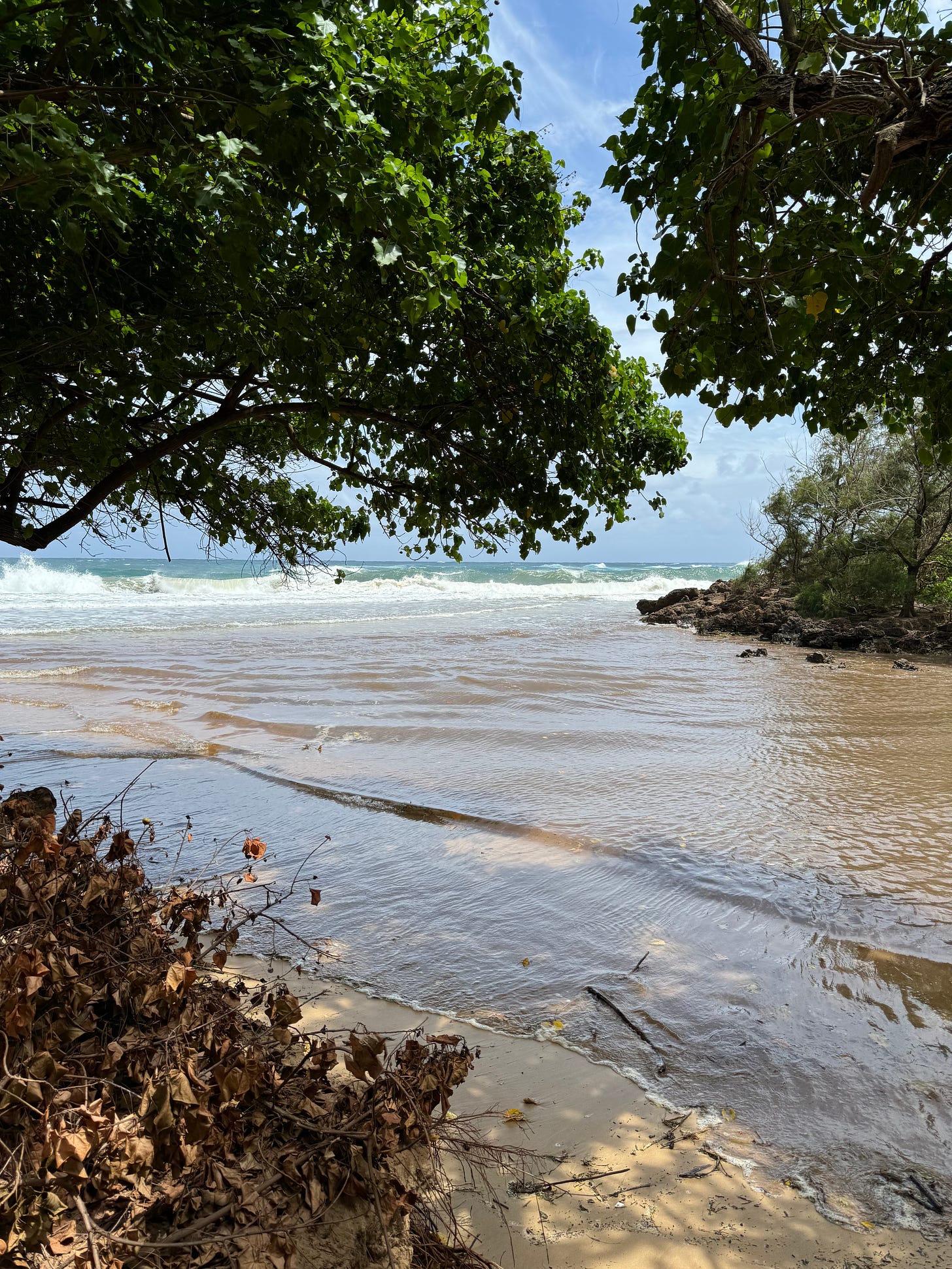
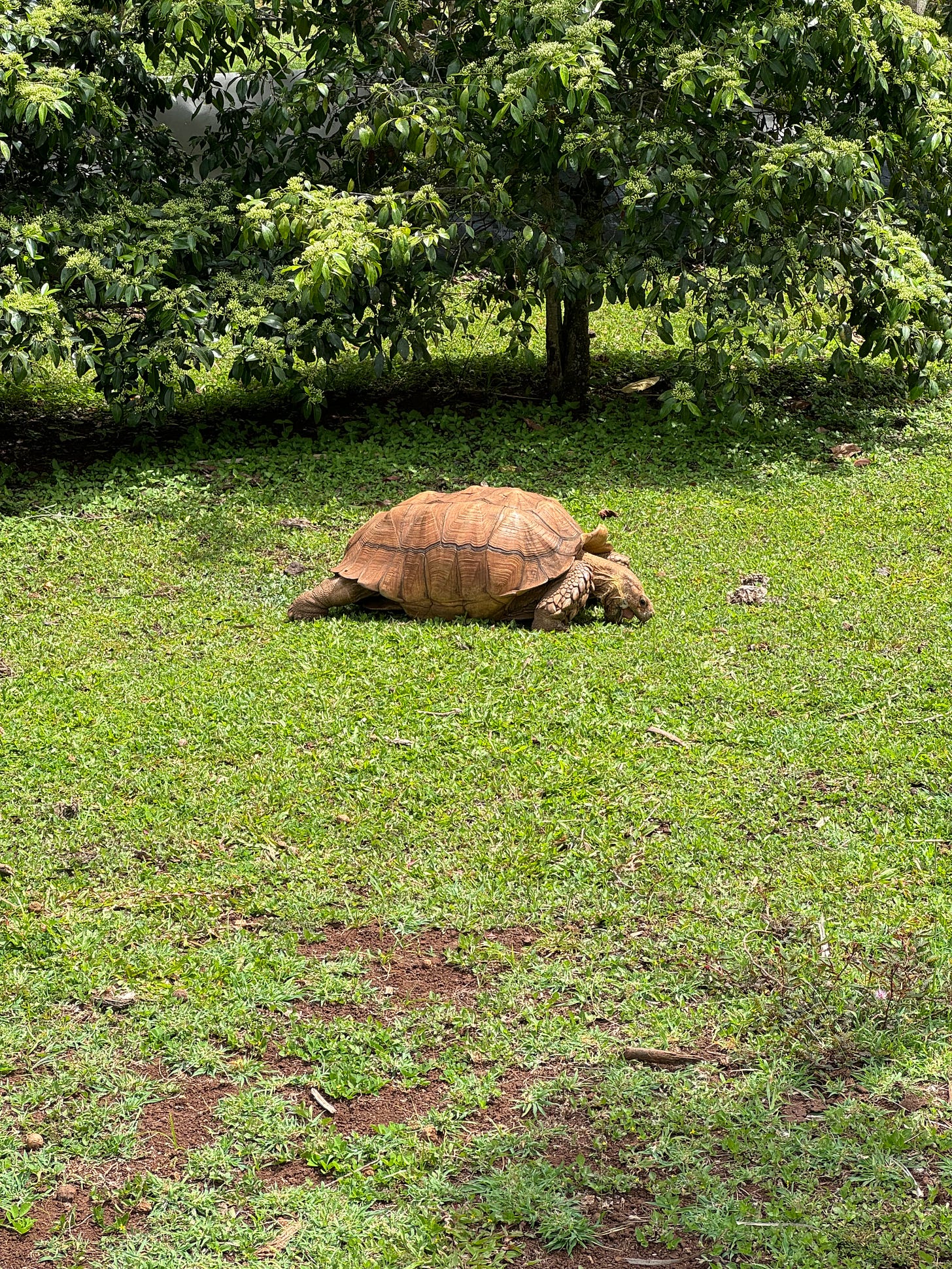
I'll give the cave spiders a miss.
Because the cave opened into a huge open-air area, I guess that could not be considered spelunking? (this is a trick question).